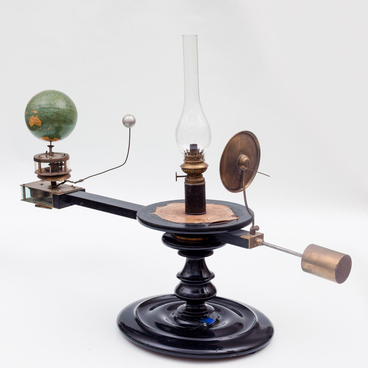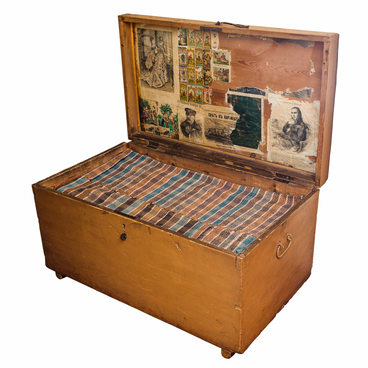The jam basin on display belonged to Maria Ulyanova Sr. It is made of copper with a riveted copper sleeve and a wooden handle (the handle itself has not survived). The surface of the basin was tin-plated, i.e. covered by a thin layer of molten tin, which protected the copper from destruction.
Such copperware was mass-produced in the 19th century by the Morozov, Turchaninov, and Stroganov factories. Copper jam basins, along with samovars, mortars and plates were bought not only by rich families but also by middle-class citizens and wealthy peasants. It was believed, that the copper basin jam better preserves the taste and smell. In addition, copper conducts heat well, so during cooking, the contents of the basin heated evenly, did not stick or burn, it did not need to be stirred.
Maria Alexandrovna used this basin when she lived in Vologda with her younger daughter Maria, who was serving an exile sentence.
Maria Ulyanova, the family’s youngest daughter, was born in 1878. At the age of nine, she left Simbirsk with her family for Kazan, where she began her gymnasium course. Maria finished it already in Moscow. In 1896, she entered the Higher Women’s Courses, and since the fall of 1898, she studied at the chemistry and physics faculty at the University of Brussels. Ulyanova participated in underground student meetings and joined the Russian Social Democratic Labor Party. From 1900, she was an agent for ‘Iskra’, an illegal revolutionary newspaper founded by her brother Vladimir to rally members of the RSDLP across the empire. In the first decade of the 20th century, Maria Ulyanova was arrested and imprisoned several times, left the country, returned, and continued her activities. In 1912, despite her attempt to escape, she was arrested again and sent into exile in Vologda for two years. Maria Alexandrovna Ulyanova also went with her.
When the exile ended and the Ulyanovs were able to return to Moscow, they left part of their belongings to Vologda resident E. I. Elakhovskaya, including this copper basin. In 1930, she gave it to the Lenin House-Museum in Ulyanovsk.
Such copperware was mass-produced in the 19th century by the Morozov, Turchaninov, and Stroganov factories. Copper jam basins, along with samovars, mortars and plates were bought not only by rich families but also by middle-class citizens and wealthy peasants. It was believed, that the copper basin jam better preserves the taste and smell. In addition, copper conducts heat well, so during cooking, the contents of the basin heated evenly, did not stick or burn, it did not need to be stirred.
Maria Alexandrovna used this basin when she lived in Vologda with her younger daughter Maria, who was serving an exile sentence.
Maria Ulyanova, the family’s youngest daughter, was born in 1878. At the age of nine, she left Simbirsk with her family for Kazan, where she began her gymnasium course. Maria finished it already in Moscow. In 1896, she entered the Higher Women’s Courses, and since the fall of 1898, she studied at the chemistry and physics faculty at the University of Brussels. Ulyanova participated in underground student meetings and joined the Russian Social Democratic Labor Party. From 1900, she was an agent for ‘Iskra’, an illegal revolutionary newspaper founded by her brother Vladimir to rally members of the RSDLP across the empire. In the first decade of the 20th century, Maria Ulyanova was arrested and imprisoned several times, left the country, returned, and continued her activities. In 1912, despite her attempt to escape, she was arrested again and sent into exile in Vologda for two years. Maria Alexandrovna Ulyanova also went with her.
When the exile ended and the Ulyanovs were able to return to Moscow, they left part of their belongings to Vologda resident E. I. Elakhovskaya, including this copper basin. In 1930, she gave it to the Lenin House-Museum in Ulyanovsk.




